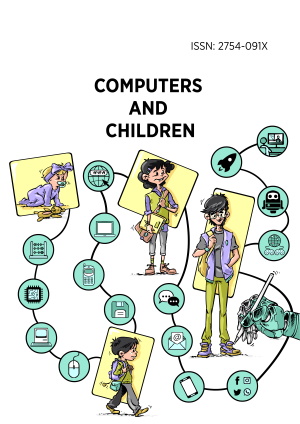Abstract
The following research paper presents a comprehensive evaluation of augmented reality (AR) games and educational tools, hence AR games, implemented in the Greek primary education system, focusing on the design and creation of a graded criteria scale (Rubric) for selecting and evaluating AR educational games–applications utilized by the students. The study aims to determine, through evaluation approaches, the basic criteria for developing an effective Rubric, by the students, on specific issues such as the main functionality and effectiveness of the games in regard to cognitive areas and skills development, steered through these AR applications. A mixed-method approach was adopted, employing qualitative and quantitative analyses, assessing AR tool utilization in classroom settings, and evaluating the applications’ educational impact. The study entails collecting data from AR tool usage in Greek primary schools and the design and construct, by the students, of a Rubric based on educational and functional effectiveness. This Rubric provides a framework for assessing various aspects of AR educational games, such as Educational Value, Content Quality, Design, Usability, and Technical Features. Key findings include AR games’ effectiveness in enhancing student engagement, understanding, and retention of information through interactive experiences. A notable facet is the integration of student input in Rubric creation, which contextualizes the evaluation process within the cognitive and developmental scope of primary education learners. Four case studies detail practical implementation and evaluation of selected AR applications: Mondly for English language learning, Clever Book AR Geometry, Google Expeditions AR for ocean exploration, and Banun Ruang AR Geometry for 3D geometry comprehension. The cases highlight the educational benefits of the specified AR games, such as visualization, active and kinesthetic learning, fostering motivation and collaboration. Constraints discussed include limitations in sample size, geographic reach, device type, and infrastructure barriers. Despite these boundaries, the study proposes a structured model for evaluating and effectively integrating AR games into educational practices, signaling a shift towards STEM-enhanced learning environments.
License
This is an open access article distributed under the Creative Commons Attribution License which permits unrestricted use, distribution, and reproduction in any medium, provided the original work is properly cited.
Article Type: Research Article
Computers and Children, Volume 4, Issue 1, 2025, Article No: em009
https://doi.org/10.29333/cac/16623
Publication date: 16 Jul 2025
Article Views: 955
Article Downloads: 460
Open Access References How to cite this article
 Full Text (PDF)
Full Text (PDF)